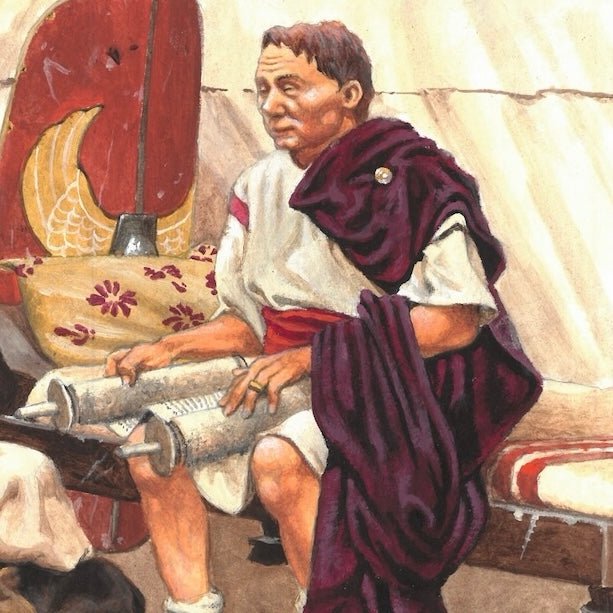Ares, the god of war (part 1)
At the conference on ancient Greek warfare in London, last April, Alexander Millington gave an interesting lecture on the Ares, the Greek god of war. Ever since that lecture, I have been meaning to devote some time to writing about Ares, and since I have also just finished a book on Greek mythology (in Dutch), to be published later this year, now seems as good a time as any.
This blog post will be in three parts. Today, I will talk about Ares’ origins and his relationship with Thrace and other “wild” regions of the ancient Greek world and its periphery. In part two, which I will post tomorrow, I will write about Ares’ role in everyday life and his relationships with the other gods, most notably Aphrodite and Athena. Part three, to be posted this Thursday, will deal with his Roman equivalent, Mars.
Ancient Ares: the origins of the god of war
Ancient Greek names are always a little bit of a puzzle, with scholars disagreeing if a particular name is of Greek (Indo-European) origin or else a name adopted from the original inhabitants by the Indo-Europeans when they first invaded the Aegean basin. Some have argued that the name is Greek and perhaps means Destroyer, but this is by no means certain (etymologically, in that case, he would be closely related to Apollo).
The earliest sources for the names of Greek divinities are the Linear B tablets unearthed in the archives of the Bronze-Age palaces, such as at Knossos and Mycenae. In these tablets, we can recognize the names of a large number of Greek gods, including Zeus, Demeter, Poseidon, Hermes, Athena, Hera, Dionysus, and Hephaestus, as well as a number of lesser divinities, including some that somehow fell out of favour after the fall of the Mycenaean palaces.
Ares is not mentioned in the tablets directly (apart from one possible identification, if memory serves), but we do have another name: Enyalius. This may have been an older god of war or perhaps an earlier name for Ares himself; the poet Archilochus of Paros, who lived around the middle of the seventh century BC, uses Enyalius as an alternate name for Ares.
Wild Ares: Thracians, Scythians, Amazons
Modern scholars tend to emphasize the foreign nature of Ares, believing the god of slaughter not to fit in well with more heavenly figures in the Greek pantheon, such as Apollo or Athena. However, this is to deny that warfare was of great cultural significance among the Greeks, as I have tried to show in my book Henchmen of Ares: Warriors and Warfare in Early Greece (2013), and as Alexander Millington demonstrated in his paper in London.
Nevertheless, the Greeks did associate Ares, as a wild and brutal man-slaying divinity, with the less civilized parts at the edge of their own world. In particular, Ares can often be found in Thrace, the area along the northern edge of the Aegean basin, which is sometimes thought to be his birthplace; Euripides calls Ares the patron deity of Thrace. Herodotus mentions that the Thracians worshipped only Ares, Dionysus, and Artemis, with the exception of their kings, who venerate Hermes (Hdt. 5.7). In Greek myth, Diomedes, the Thracian King, possessed man-eating mares that Heracles had to tame as part of his famous Twelve Labours.
Ares was also associated with nomadic horse-peoples. According to Herodotus, the Scythians worshipped Ares in the form of a sword, sacrificing animals and captives to a sword stuck into a pile of brushwood (Hdt. 4.62). Ares was also considered the father of the Amazons, the fierce horsewomen who were thought to have their capital at Themiscyra on the River Thermodon, possibly to be identified with the historical Themiscyra in Pontus (Anatolia); their fiery queen was a descendant of the god of war himself.
Various figures associated with Ares serve to enhance his wild status. Two of his sons are called Phobos (Rout) and Deimos (Fear) and said to accompany him on the battlefield to install fear in the hearts of men. Ares is also accompanied by the Keres, female death-demons or spirits who suck the blood from the sand of those who have fallen in combat. They are roughly equivalent to the Valkyries from Teutonic myth.
Beastly Ares: dragons
Finally, Ares is also associated in Greek mythology with a number of monstrous creatures. Chief among these are various dragons. When Cadmus had been sent out by his father to search for his lost sister Europa (she had been kidnapped by Zeus), he was told by the Oracle of Delphi to stop looking and found a city instead. The city he founded was Thebes, but only after he had slain a ferocious dragon, beloved of Ares, who was guarding the spring where he wanted to get water to perform the necessary rites.
The death of his dragon angered Ares, but eventually he patched things up with Cadmus. The latter was even given Harmonia to wed, the daughter of Ares and Aphrodite. Upon their death, they were turned into serpents, perhaps in recognition of the reptilian origin that lay at the heart of their unification.
Similarly, Aeetes, the king of Colchis, was so favoured by Ares that the god of war gave him a dragon to guard the fabled Golden Fleece. Unlike Cadmus, Jason and the Argonauts did not need to fight the dragon, as the king’s daughter, Medea, managed to put the creature to sleep long enough for the Thessalian hero to grab the Fleece and make a run for it, no doubt much to the dismay of Ares.
This blog post continues in part two, to be published tomorrow.




